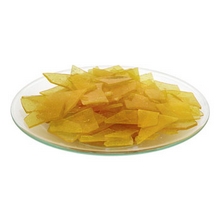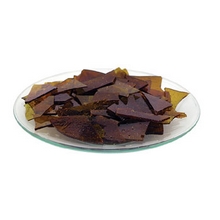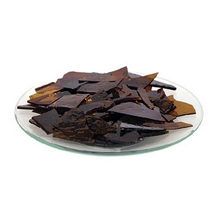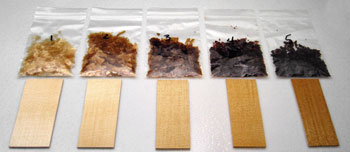|
Getting Started |
||||||||||||||||||||||||||||||||||
| What is French Polish? French
polishing is not a finish, it is a technique for applying shellac
to wood with a cloth rubbing pad, called a 'muneca', which
achieves a very good quality of finish, but takes quite a lot of work
and time to build up the thickness, and to be honest, a fair bit of
experience to arrive at an acceptable result. That said, if it all goes
wrong, it can easily be sanded back the started anew.
What do I need? If you are just beginning, I would recommend the following, as the least likely to present problems. With more experience, you may wish to try other combinations...
Where do I get Shellac? In Europe I would suggest Dicks in Germany, who do produce an English cataloge, now called Dictum...
In the States I would suggest Luthiers Mercantile International at www.lmii.com but beware they cannot ship everything abroad now after 9/1 and after Brexit there are stupid customs charges for the UK.
How do I mix the shellac? It is mixed by adding given quantities of shellac flakes and alcohol in glass jar. A pint of mixed shellac is easily enough to French polish a whole guitar. For a mandolin it would obviously be much less. I typically make up about 1/4 pint at a time, keeping it in a screw top jar.
What kind of Alcohol is used as solvent? There are 3 types of commonly available alcohol; methanol, (methyl or wood alcohol) ethanol (ethyl or grain alcohol) and isopropanol (isopropyl or rubbing alcohol). All of these will dissolve shellac, BUT, methanol is very toxic, ethanol can be very expensive because of alcohol tax, and isopropanol usually contains too much water to be useful. What we use is denatured ethanol/alcohol, ethanol made poisonous so it cannot be drunk, so not subject to alcohol tax. ('Alcool a brule' in French) How do I make a Muneca? A Muneca is the cloth pad used to apply the liquid shellac to the wood. ('Muneca' is Spanish for puppet; draw 2 eyes and a mouth, and you have a puppets head!) It is made by wrapping an inner absorbent pad tightly within an outer, lint-free, non-stretch cover. For the inner I use a piece of old woollen sock, but cheesecloth or t-shirt cotton will also do. For the outer I use t-shirt cotton. Make a pad of the inner material, about 2-3" across, I cut 2 or 3 round circles, each smaller than the last, and wrap them tightly in the outer fabric. Use wire bag-ties or light wire to tie it off. It can be used repeatedly, changing the cover as it becomes worn. Store in an air-tight glass jar. When next used it may be 'activated' with perhaps less than the normal shellac. I make several muneca, because its not always useful to use the same one for pumice, polishing, and removing oil. What is pumice? Pumice is a very fine volcanic glass. It comes as a white powder, but because of a low refractive index, appears colourless when mixed with shellac or oil. It is also abrasive. Thus it is perfect as a pore filler. The finest grad is 4f and this is the one used in French polishing.
|
||||||||||||||||||||||||||||||||||



